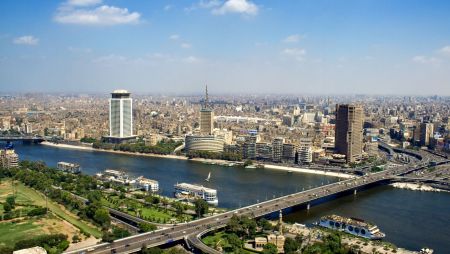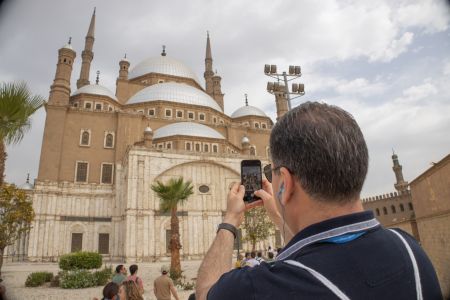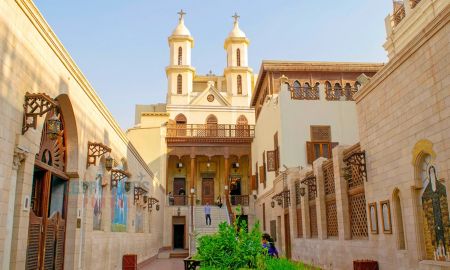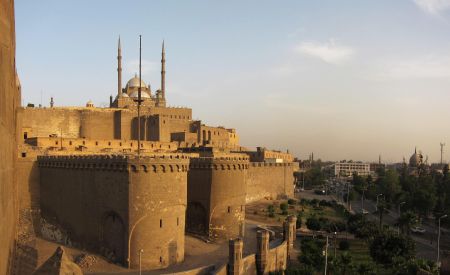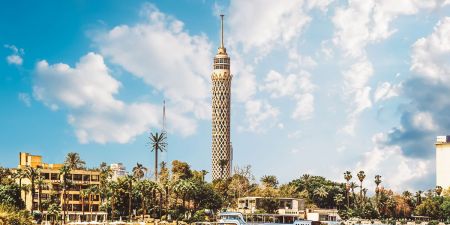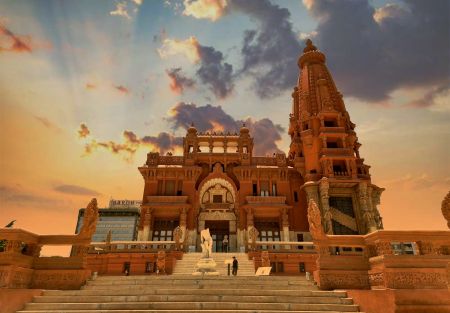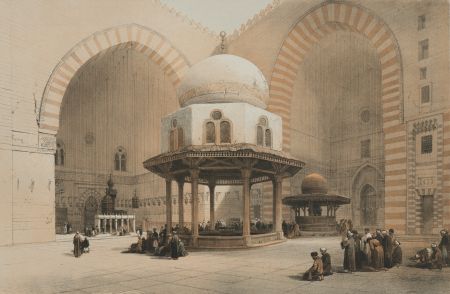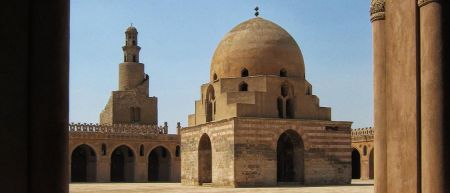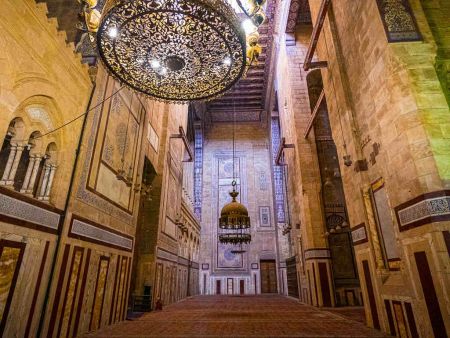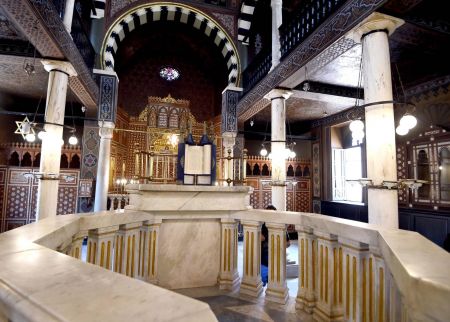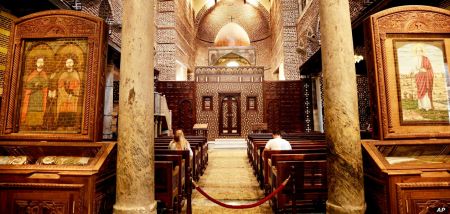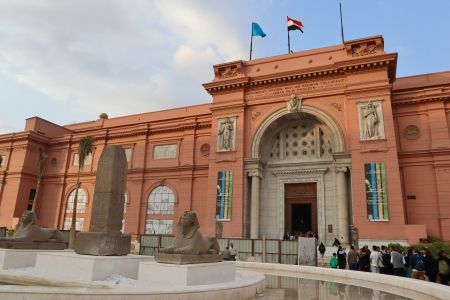Al Azhar Park : Cairo’s Green Jewel of Culture and Serenity

In the heart of bustling Cairo, where history and chaos blend seamlessly, Al Azhar Park emerges as a tranquil escape and an architectural triumph. Spanning over 30 hectares, this meticulously designed public space sits atop a hill in Islamic Cairo, offering sweeping panoramic views of the city’s skyline, minarets, and historic landmarks.
Once a neglected debris dump for centuries, Al Azhar Park was transformed into one of Cairo’s most stunning green spaces thanks to a visionary restoration project by the Aga Khan Trust for Culture. Since opening in 2005, it has become a beloved destination for both locals and tourists, providing a lush contrast to the urban sprawl that surrounds it.
From its carefully manicured gardens and marble fountains to its historic restorations and eco-friendly design, Al Azhar Park isn't just a park—it’s a cultural rebirth. It revives the city’s forgotten heritage, fosters community connection, and celebrates Islamic garden traditions while offering modern amenities, dining, and entertainment. Whether you’re seeking peace, photography, history, or a romantic evening, this park delivers it all with a panoramic flourish.
The History and Transformation of Al Azhar Park
From Rubbish Dump to Regal Garden
For over 500 years, the site that now houses Al Azhar Park served as a municipal landfill. Towering mounds of debris accumulated just east of the historic Al-Darassa area. In 1984, His Highness the Aga Khan IV initiated a bold vision: to gift the people of Cairo a world-class urban park that would reflect Islamic architecture, preserve history, and serve the public good.
The Role of the Aga Khan Trust for Culture
The transformation was led by the Aga Khan Trust for Culture (AKTC), a development organization known for revitalizing historic cities. This ambitious project took more than 20 years of planning, excavation, and construction. Along the way, it uncovered priceless archaeological treasures and restored nearby monuments such as the Ayyubid Wall and several historic mosques.
Landscape Architecture and Design of Al Azhar Park
Inspired by Traditional Islamic Gardens
Al Azhar Park’s layout draws heavily from classical Islamic garden principles, emphasizing geometry, symmetry, and flowing water. Pathways lead through terraced gardens, tree-lined promenades, and tranquil reflecting pools. These design choices are not just aesthetic—they symbolize paradise as envisioned in Islamic art and philosophy.
Native Flora and Environmental Sustainability
More than 655 species of plants were introduced, many of them native or drought-resistant. The park includes water-saving irrigation systems and soil engineering to manage Cairo’s arid climate. It’s an environmental model for sustainable development in urban settings.
Scenic Overlooks and Sunset Views
One of the park’s biggest draws is its elevated terrain, offering unrivaled views of Cairo’s skyline. From the Citadel of Salah El-Din to the minarets of Islamic Cairo and even glimpses of downtown skyscrapers, the panoramic vistas are breathtaking—especially at sunset.
Key Attractions Inside Al Azhar Park
The Lakeside Café and Citadel View Restaurant
For those looking to dine in style, the park’s Lakeside Café and Citadel View Restaurant offer a memorable culinary experience paired with beautiful surroundings. These spots are ideal for romantic dinners, family outings, or simply sipping tea with a view.
The Ayyubid Wall and Historic Restoration Zone
While building the park, archaeologists uncovered a section of the 12th-century Ayyubid Wall built by Salah El-Din. The area around the wall was turned into an outdoor museum space, where visitors can explore Cairo’s fortified past alongside modern gardens.
Open Spaces, Playgrounds, and Cultural Events
Al Azhar Park features spacious lawns, children’s play areas, and open-air venues for concerts, festivals, and exhibitions. It frequently hosts music performances, food markets, and cultural showcases that celebrate Egypt’s rich heritage.
Cultural and Community Impact of Al Azhar Park
Reviving Historic Cairo
The park’s development triggered one of the most extensive urban regeneration projects in Cairo. Restoration extended beyond the park to include nearby Darb Al-Ahmar—a historic but impoverished neighborhood. Dozens of monuments were restored, and local residents were trained in traditional crafts and construction.
A Hub for Social Gathering
In a city short on green space, Al Azhar Park Cairo serves as a vital gathering place. Families picnic under trees, friends take leisurely walks, and couples find quiet corners for contemplation. It’s a rare public space where people from all walks of life interact harmoniously.
Visiting Al Azhar Park – Essential Guide for Tourists
Location and Entry Details
Al Azhar Park Cairo is located near Salah Salem Street, adjacent to Islamic Cairo and close to the Citadel. It’s accessible via car, taxi, or public transport. Entry fees are modest, and discounted rates are available for Egyptian nationals.
Best Times to Visit
Late afternoon is the best time to visit, especially if you want to catch the golden hour or sunset. Evenings are lively, especially on weekends, but weekdays are quieter and ideal for peaceful exploration.
What to Bring and Wear
Wear comfortable shoes for walking and bring a camera—you’ll need it. Modest clothing is recommended, especially for women. If you’re planning to dine or attend a concert, consider bringing a light jacket for cooler evenings.
Nearby Attractions Around Al Azhar Park
One of the biggest advantages of visiting Al Azhar Park is its location in the heart of Islamic Cairo, surrounded by some of the city’s most important historic landmarks. Just a short drive away lies the magnificent Salah El Din Citadel, a medieval fortress that dominates Cairo’s skyline and houses The Alabaster Mosque of Cairo. To the west, visitors can explore the vibrant district of Khan al-Khalili Bazaar, where narrow alleyways overflow with spices, jewelry, and handcrafted souvenirs. For those interested in Islamic architecture, the nearby Sultan Hassan Mosque and Al Rifai Mosque showcase Cairo’s rich Mamluk heritage. Together, these sites make Al Azhar Park not just a destination in itself, but also the perfect starting point for exploring Cairo’s cultural and architectural wonders.
Why Al Azhar Park Is a Must-Visit in Cairo
A Rare Green Space in a Concrete Metropolis
Cairo, known for its ancient ruins and bustling streets, offers few spots where greenery takes center stage. Al Azhar Park changes that narrative. With its lush lawns, palm-lined walkways, and fountains, it's a rare and refreshing break from the city’s fast pace.
History, Nature, and Culture in One Destination
Where else can you see restored Islamic walls, dine with views of medieval minarets, listen to live music, and stroll through manicured gardens—all in the same place? Al Azhar Park merges past and present in a beautifully balanced experience.
Frequently Asked Questions About Al Azhar Park
When was Al Azhar Park built?
Al Azhar Park Cairo opened to the public in 2005 after more than 20 years of development and restoration efforts.
What is the entry fee for Al Azhar Park?
Entry fees are modest and vary for locals and tourists. Prices may change during holidays or special events.
Are there restaurants inside Al Azhar Park?
Yes. The park features several high-quality restaurants and cafés, including the popular Lakeside Café and Citadel View Restaurant.
Is Al Azhar Park suitable for children?
Absolutely. The park has open spaces, walking paths, and dedicated playgrounds for children, making it ideal for families.
What are the best times to visit Al Azhar Park?
Late afternoon through sunset is the best time to enjoy the views and cooler temperatures. Weekdays are quieter than weekends.


